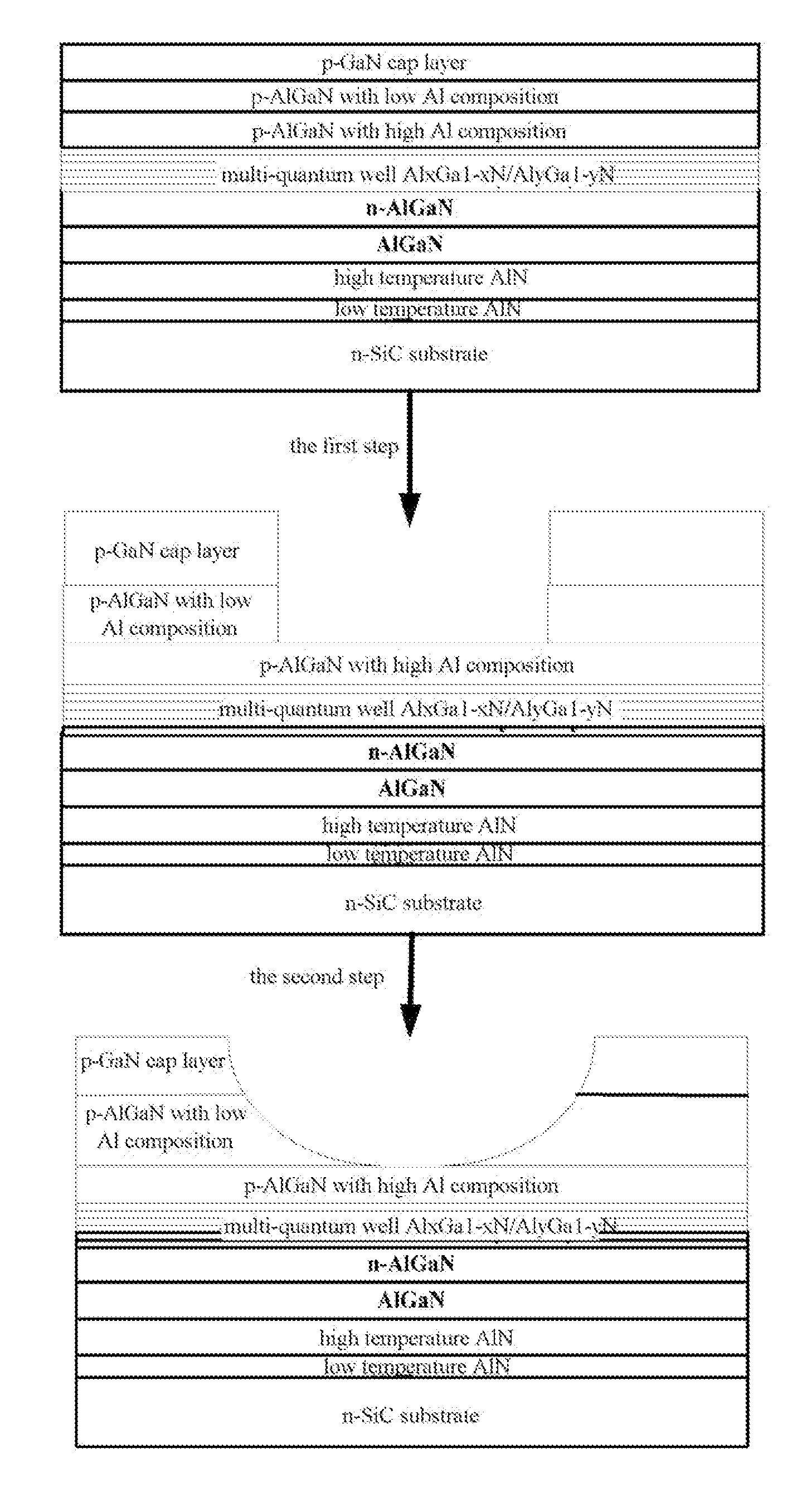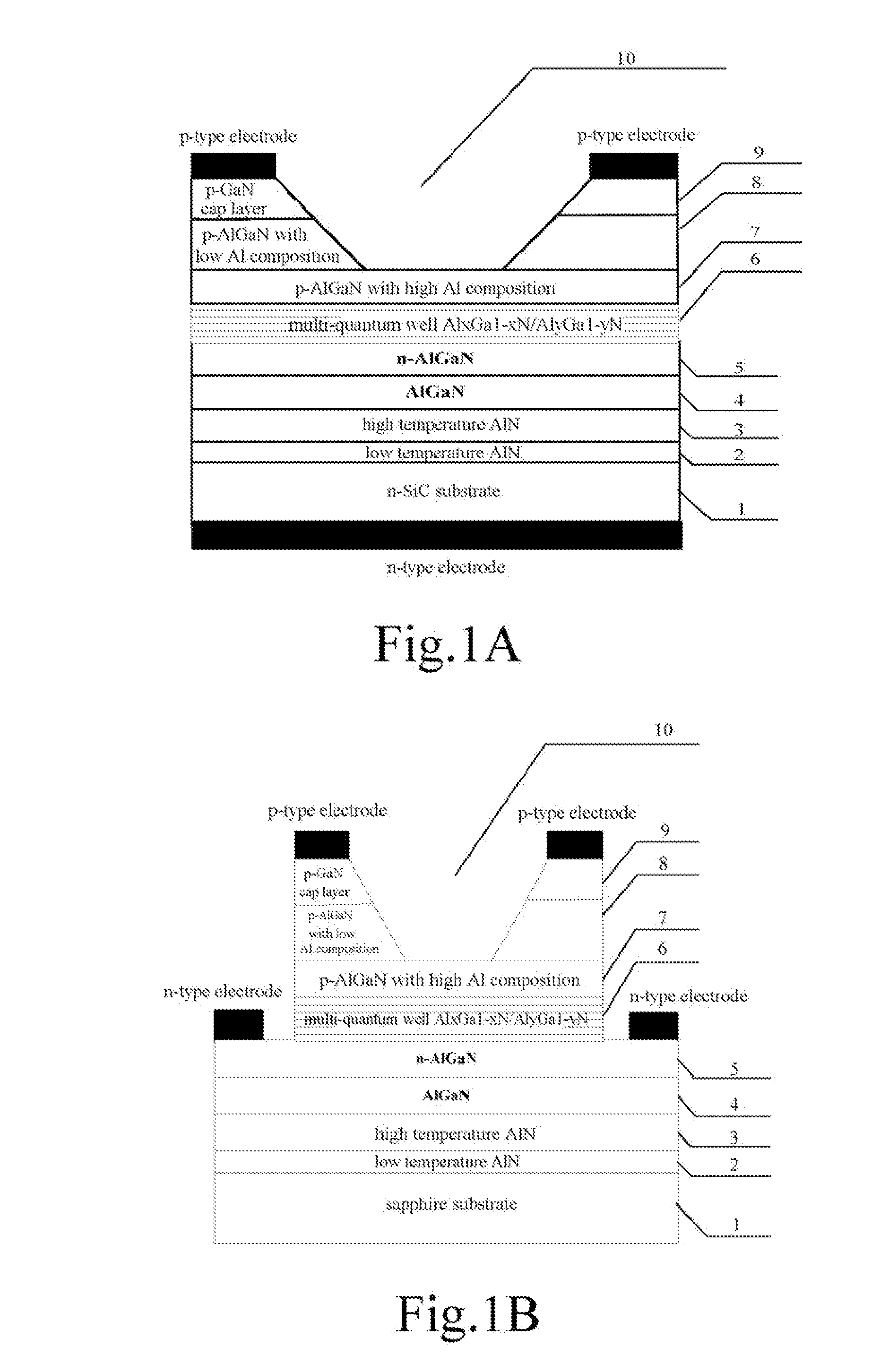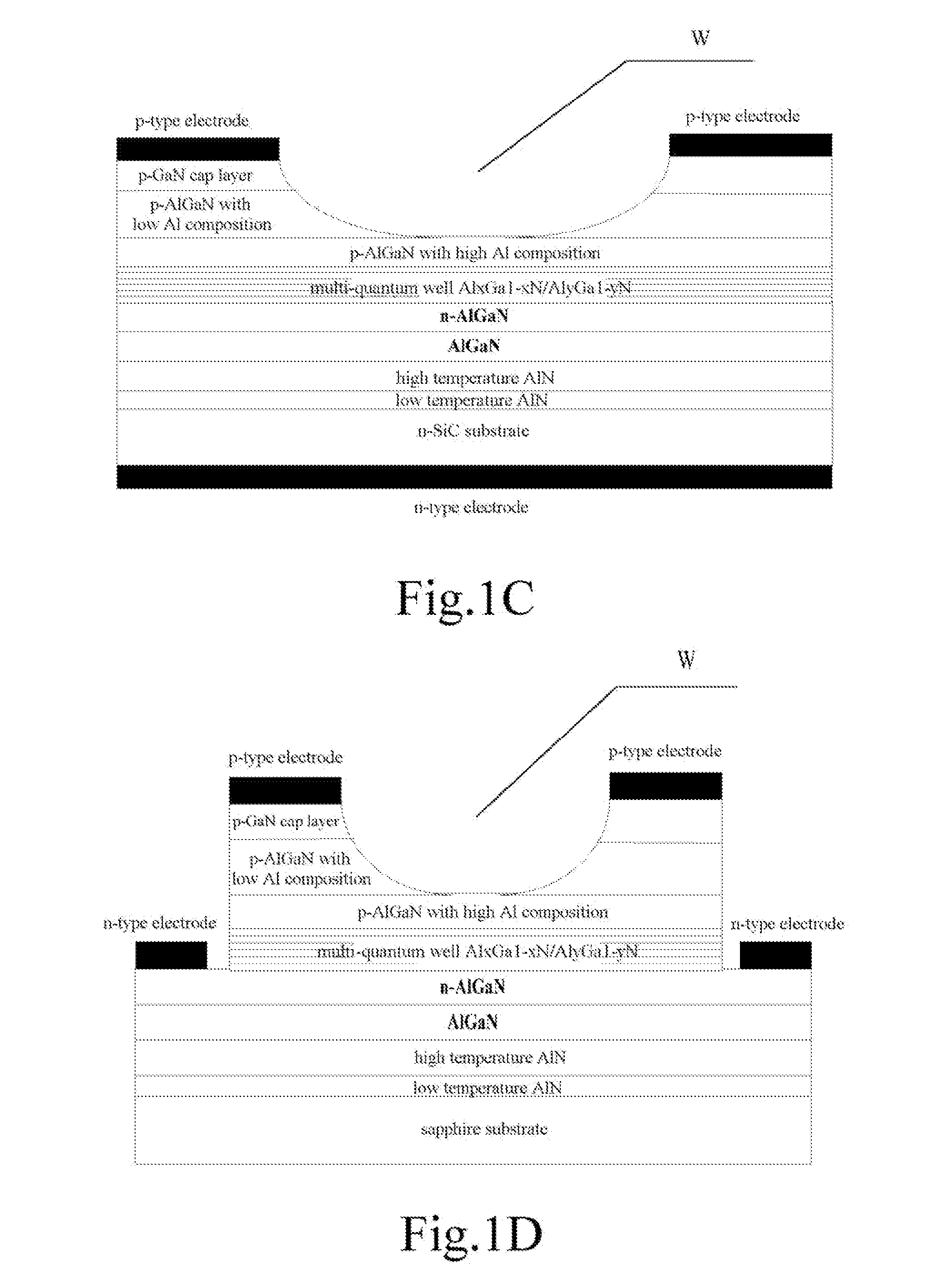Ultraviolet light emitting diode devices and methods for fabricating the same
a technology of ultra-violet light and diodes, which is applied in the field of ultra-violet light emitting diodes, can solve the problems of difficult fabrication of high-quality algan materials, low external quantum efficiency and light power of ultra-violet led devices, and increase the active composition of gan-based led devices, etc., to facilitate the practical application of algan-based ultra-violet led devices. , the effect of improving the aperture of light emission
- Summary
- Abstract
- Description
- Claims
- Application Information
AI Technical Summary
Benefits of technology
Problems solved by technology
Method used
Image
Examples
first embodiment
[0035]Hereinafter, a method for fabricating the UV LED device shown in FIG. 1E having a SiC substrate and a cylindrical window, is described with respect to FIGS. 2A and 2B.
[0036]First, a material growth step is shown is FIG. 2A:
[0037]At step 1, on the SiC substrate, a low-temperature AlN nucleating layer is grown by a MOCVD process.
[0038]Lowering a temperature of the substrate to 600° C.; retaining a growing pressure of 50 Torr, a flow rate of 1500 sccm of hydrogen gas, a flow rate of 1500 sccm of ammonia gas; introducing an Al source at a flow rate of 28 μmol / min into a reaction chamber; and growing the low-temperature AlN nucleating layer with a thickness of 3 nm.
[0039]At step 2, on the low-temperature AlN nucleating layer, a high-temperature AlN nucleating layer is grown.
[0040]Raising a growing temperature to 1050° C.; retaining the growing pressure of 50 Torr, the flow rate of 1500 sccm of hydrogen gas, the flow rate of 1500 sccm of ammonia gas; introducing the Al source at a f...
second embodiment
[0079]Hereinafter, a method for fabricating the UV LED device shown in FIG. 1F, having a sapphire substrate and a cylindrical window, is described with respect to FIGS. 3A-3C.
[0080]First, a material growth step is shown is FIG. 3A:
[0081]At step 1, on the sapphire substrate, a low-temperature AlN nucleating layer is grown using a MOCVD process.
[0082]Lowering a temperature of the substrate to 600° C.; retaining a growing pressure of 50 Torr, a flow rate of 1500 sccm of hydrogen gas, a flow rate of 1500 sccm of ammonia gas; introducing an Al source at a flow rate of 28 μmol / min into a reaction chamber; and growing the low-temperature AlN nucleating layer with a thickness of 5 nm.
[0083]At step 2, on the low-temperature AlN nucleating layer, a high-temperature AlN nucleating layer is grown.
[0084]Raising a growing temperature to 1050° C.; retaining the growing pressure of 50 Torr, the flow rate of 1500 sccm of hydrogen gas, the flow rate of 1500 sccm of ammonia gas; introducing the Al sou...
third embodiment
[0128]Hereinafter, a method for fabricating the UV LED device shown in FIG. 1A, having a SiC substrate and a conic window, is described with respect to FIG. 4. On the SiC substrate 1, a cone-like window is made using the ICP dry etching and a wet etching, the steps are as follows.
[0129]At step 1, on the SiC substrate 1, a low-temperature AlN nucleating layer 2 is grown using the MOCVD process.
[0130]Lowering a temperature of the substrate to 600° C.; retaining a growing pressure of 50 Torr, a flow rate of 1500 sccm of hydrogen gas, a flow rate of 1500 sccm of ammonia gas; introducing an Al source at a flow rate of 28 μmol / min into a reaction chamber; and growing the low-temperature AlN nucleating layer with a thickness of 10 nm.
[0131]At step 2, on the low-temperature AlN nucleating layer 2, a high-temperature AlN nucleating layer 3 is grown.
[0132]Raising a growing temperature to 1050° C.; retaining the growing pressure of 50 Torr, the flow rate of 1500 sccm of hydrogen gas, the flow ...
PUM
| Property | Measurement | Unit |
|---|---|---|
| pressure | aaaaa | aaaaa |
| bias voltage | aaaaa | aaaaa |
| temperature | aaaaa | aaaaa |
Abstract
Description
Claims
Application Information
 Login to View More
Login to View More - R&D
- Intellectual Property
- Life Sciences
- Materials
- Tech Scout
- Unparalleled Data Quality
- Higher Quality Content
- 60% Fewer Hallucinations
Browse by: Latest US Patents, China's latest patents, Technical Efficacy Thesaurus, Application Domain, Technology Topic, Popular Technical Reports.
© 2025 PatSnap. All rights reserved.Legal|Privacy policy|Modern Slavery Act Transparency Statement|Sitemap|About US| Contact US: help@patsnap.com



